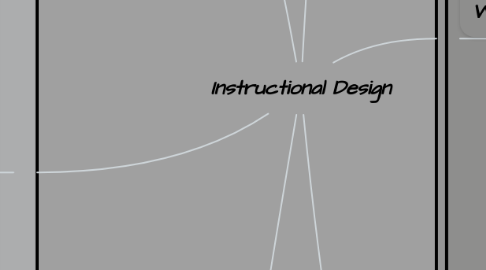
1. Where?
1.1. .
1.1.1. Maker Spaces
1.1.2. Cyber Cafe
1.1.3. Home
1.1.4. Mobile
1.1.5. Classroom
1.1.6. Tuition Center
2. Why?
2.1. .
2.1.1. ID creates high quality learning materials that take into account the strengths and weaknesses of students, therefore students can learn more efficiently.
2.1.2. ID ensures students to learn efficiently.
2.1.3. ID helps students engage more while learning.
3. How?
3.1. (D) esign
3.1.1. Design your course on paper
3.1.1.1. •Name the learning units of Instruction •Identify content and strategies for an individual unit of instruction •Write instructions for the learning unit •Name the menu items for a learning module
3.2. ADDIE
3.2.1. (A) nalyze
3.2.1.1. Pre-planning : Thinking about the course
3.2.1.1.1. •Design of course •Audience •Goal •Objectives •Identify content •Identify Environment and Delivery •Instructional Strategies •Assessment Strategies •Formative Evaluation •Constraints
3.2.2. (D) evelop
3.2.2.1. Develop course materials and assemble the course
3.2.2.1.1. •Name the learning units of Instruction •Identify content and strategies for an individual unit of instruction •Write instructions for the learning unit •Name the menu items for a learning module
3.2.3. (I) mplement
3.2.3.1. Begin teaching
3.2.3.1.1. •Overview of course •Expectations •Initiate instruction •Interaction •Ask for feedback early on (formative evaluation)
3.2.4. (E) valuation
3.2.4.1. Look at the course outcomes with a critical eye
3.2.4.1.1. •Did the students achieve expected learning outcomes? •What have you learned? •How can you make the course better?
4. What?
4.1. Definition
4.1.1. A systematic process, based on educational theories, on the development of instructional strategies, and specifications to promote quality learning experience.
4.1.2. Knowledge of how people learn, the available tools, how to apply those tools, and to engineer a plan to enhance the teaching and learning experience.
4.2. Models
4.2.1. ADDIE
4.2.1.1. Analysis
4.2.1.2. Design
4.2.1.3. Development
4.2.1.4. Implementation
4.2.1.5. Evaluation
4.2.2. Gagne
4.2.3. Ropes
4.2.4. Merril's Principal of Instructions
5. Who?
5.1. Practioner
5.1.1. Fascilitator
5.1.2. Lecturers
5.1.3. Teachers
5.1.4. Tutors
5.2. Gainer
5.2.1. Targeted Audience
5.2.2. Students
6. When?
6.1. .
6.1.1. During the lessons.
